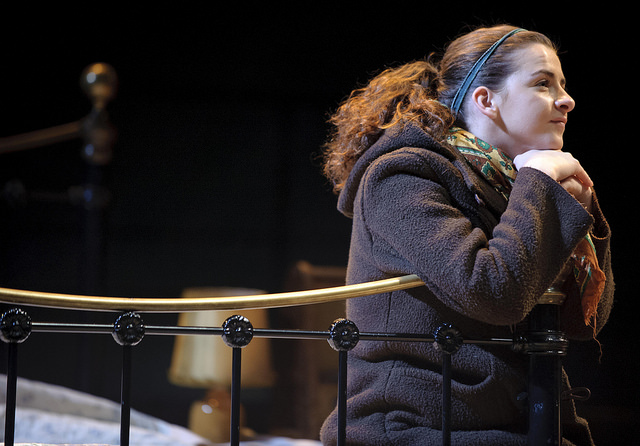Before I went to Clown Fest I thought there were two kinds of clown: kiddy clowns and scary clowns. The only exception to this rule is if you are Stephen King, when your kiddy clown is actually an inter-dimensional monster hell-bent on eating kids.
Fortunately for Manchester, Alice Robinson and Mark Winstanley, the organisers of Manchester’s inaugural Clown Fest, know different. They pulled together a mix of local talent and internationally known clowns and physical comedians, and slapped them down in Exchange Square on the last Friday and Saturday in July.
Daytime was more family-oriented, but not necessarily tamer. The most inventive heckling I saw came on Saturday afternoon. Poor Cyril the Squirrel had primed the audience to go ‘pop’ when Willy the Weasel appeared. Unfortunately, Cyril had done rather too good a job of turning the audience against the hapless glove puppet baddie, who was faced with massed ranks of four-year-olds spontaneously sneering “blah, blah, blah” as he tried to get his weaselly lines out.
 The Saturday evening shows shared some features of the family-family clowns. They all made a point of not just talking to the audience, but involving them both physically and verbally in the action. At one point during The Establishment’s show, they put on tweed caps to go hunting. An audience member decided to don his own cap and was subsequently spotted and transformed into a farmer who, in turn, executed the performers (now, of course, rabbits). Rule number one of clown: don’t let a script blind you to a good gag staring you in the face.
The Saturday evening shows shared some features of the family-family clowns. They all made a point of not just talking to the audience, but involving them both physically and verbally in the action. At one point during The Establishment’s show, they put on tweed caps to go hunting. An audience member decided to don his own cap and was subsequently spotted and transformed into a farmer who, in turn, executed the performers (now, of course, rabbits). Rule number one of clown: don’t let a script blind you to a good gag staring you in the face.
The Establishment was the most traditional act of the three I saw on Saturday evening, taking two drawling upper-class twits through skits on the Boat Race, cricket, huntin’, the financial pages and Brexit, before heading into darker territory (colonisation, sacrificing audience members and the end of humanity). But it was more a pastiche of a sketch show, both in topics and style, than anything else. Rule number two of clown: play’s the thing. Watching performers who are obviously enjoying themselves makes you want to play along as well.
Roisin and Chiara got the audience onside by feeding them Liquorice Allsorts during the pre-show, and then introducing the famous people in that night (“and here, on the front row, it’s Viggo Mortensen”). The show was pacy, funny, and giggle-out-loud silly. Observational comedy morphed into surrealism with animal heads making more than one appearance (in fact, sweets, toys, and hats showed up a lot in both shows). Much of the energy came from the pair’s constantly inventive physicality, imitating and warping images from hip hop, domestic drama, and cabaret. Rule three of clown: the audience is more interested in looking at you than listening to you.
The night ended with Red Bastard. A long-legged pustule with red-rimmed eyes, here was the scary clown of your nightmares. But the show was not so much in-yer-face as in-yer-head. The Bastard scampered among the audience, mocking the evasive answers given to his questions about love and sex, ‘eating’ the lies he was told. It didn’t really feel like picking on individuals (having established at the beginning, by a process of elimination, that “we’re all liars”). What made the show special, though, was the about-turn in its final minutes, where the feral cerebrality of the Bastard’s Q & A was upstaged by simple, and astonishingly vulnerable, moments. You had to be there.
And it all happened right in the middle of Manchester. The family shows were pay what you can, and young comedy fans could have laughed their socks off at Roisin and Chiara and still been home in time for Casualty. What’s not to like?





To read Northern Soul’s interview with the brains behind Clown Fest, click here.











